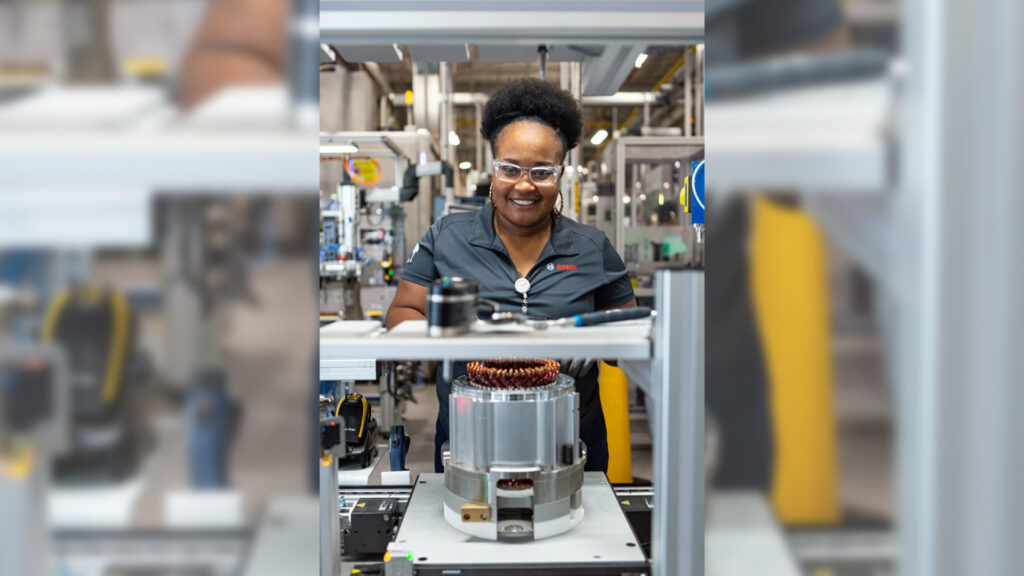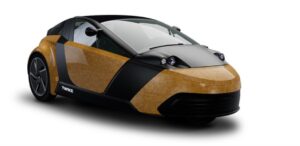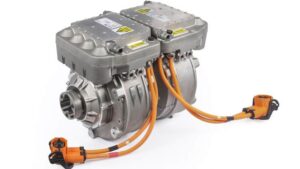The Car and Mobility Observatory of Luiss Business School, managed by prof. Fabio Orecchini of Guglielmo Marconi University and by prof. Luca Pirolo of Luiss University, has recently presented its activities, research lines and the Roadmap 2023, an opportunity in which UNRAE, National Union of Foreign Motor Vehicles Representative, has shown market data and prospects.
The research activity concerns also the identification of suitable energy strategies for the car and the mobility in Italy and in Europe, and has fixed its pillars in sustainability, energy safety, industrial development, socio-economic growth and market.
The Observatory’s research has unveiled what the Innovation words in the car and mobility sector are: CO2, Battery, Safety, Hybrid, EV, Mobility and Sustainability. CO2 turned out to be by far the most used term, with 41% of the contributions concerning thirty key words used for the analysis The most interesting technologies are related to electrification (Battery 13%, Hybrid 10% and EV 10%), but there is great interest also in safety (Safety 12%).
“The results of the first research about innovation words”, adds the professor, indicate the great interest by industrial players and public in the environmental and technological innovation issues. The fact that, against 2,703 tweets by automotive companies, more than 55,600 responses and retweets about innovation key terms have been generated demonstrates how these words are the core of the debate and must be attentively considered not only in commercial and marketing actions but also in policies and applicative actions deployed by administrative and government bodies”, Luca Pirolo explained.
“The establishment of a university study and research centre dedicated to car and mobility represents an important opportunity for the whole economic and industrial system connected with the sector”, commented professor Fabio Orecchini. “The Observatory relies on precious multidisciplinary competences to support the transformation in course in industry and in the role of the public administration in the mobility sector”.
Roadmap 2023, Car and Mobility Observatory
Comer Industries enters the market of electric motors
Reality specialized in the design and manufacturing of advanced engineering systems and mechatronic solutions, Comer Industries enters the market of motors and transmissions for electric vehicles due to the full takeover of Benevelli Electric Powertrain Solutions and Sitem Motori Elettrici, specialized in the design, prototyping and manufacturing of transmissions and motors for electric vehicles.
The two realities taken over are deeply rooted into the Emilian territory and together they count 65 years of entrepreneurial history in the sector of motors and transmissions for electric vehicles.
Since their foundation, the enterprises have scored an important growth that is likely to last and to increase, due to the attractiveness of a market in strong expansion.
For Comer Industries, the takeover of Benevelli Electric Powertrain Solutions and Sitem Motori Elettrici pursues a double target: first of all, growing in a great expansion market, by enriching the range of offered products through investments in forefront sustainable technologies; secondly, preserving the value of the Italian excellence in the engineering industry.
The operation occurs precisely one year after the signature of the agreement for the 100% takeover of the German Walterscheid, among the top players in the sector of the industry of propulsion systems and services for Off-Highway and industrial applications.
“I am proud of announcing this operation that concerns two excellences in a strongly expanding market, like electric vehicles’” comments Matteo Storchi, President and Managing Director of Comer Industries. “Entering the market of motors and transmissions for electric vehicles means offering a complete range of products and technologies in constant evolution” Storchi adds.
Here are instead the words by Alberto Benevelli, Managing Director of Benevelli Electric Powertrain Solutions: “Becoming part of Comer Industries Group is a reason for great satisfaction for us. Investing in territory’s realities means preserving the value of the Italian character in the engineering sector to make our ranking further grow in the emerging sector of transmissions for electric vehicles.
Bosch invests in USA in the production of electric motors
Recently, Bosch announced the launch of production of electric motors at its Charleston, S.C. manufacturing facility. Additionally, the company plans to invest more than $260 million to further expand production of electrification products at the site, which is expected to create at least 350 net new jobs by 2025.
Mike Mansuetti, president of Bosch in North America said: “We have grown our electrification business globally and here in the North American region. We’ve invested more than $6 billion dollars in electromobility development and in 2021 our global orders for electromobility surpassed $10 billion dollars for the first time. Local production helps to advance our customers’ regional electrification strategies, and further supports the market demand for electrification.”
 The Charleston plant stands out with a long history of process competency as well as its knowledge in the area of automation and robotics. Production at the site features highly-automated processes, and the site utilizes artificial intelligence and Industry 4.0 methods to gain more efficiency.T
The Charleston plant stands out with a long history of process competency as well as its knowledge in the area of automation and robotics. Production at the site features highly-automated processes, and the site utilizes artificial intelligence and Industry 4.0 methods to gain more efficiency.T
The Bosch Charleston facility, which opened in 1974, is the largest manufacturing site in the United States for Bosch from an employment perspective with around 1,500 associates. It covers more than 900,000 square feet of floor space located on 118 acres.
The newly launched production of electric motors is located in a building formerly occupied by production of diesel components. Bosch has provided reskilling and upskilling opportunities to associates to prepare for the production of electric motors. This includes associates travelling to other sites within the global Bosch production network for training and best practice sharing.
Bosch is also collaborating with local schools to begin implementing fundamentals related to electrification into curriculum.
Strategic agreement between BorgWarner and Wolfspeed
Market trends are a clear limestone of the technological macro-direction. As for the last big operation announced by the two players BorgWarner, global product in delivering innovative and sustainable mobility solutions for the vehicle market and Wolfspeed, top player in Silicon Carbide technology. BorgWarner will invest $500 million in Wolfspeed’s financing transaction, in exchange for a silicon carbide device capacity corridor. Under the multi-year agreement between BorgWarner and Wolfspeed, BorgWarner will be entitled to purchase up to $650 million of devices annually as BorgWarner requirements increase.
“Silicon carbide-based power electronics play an increasingly important role for our customers as our electric vehicle business continues to accelerate,” said Frédéric Lissalde, President and CEO of BorgWarner. “We believe this agreement helps ensure that BorgWarner will have a reliable supply of high-quality silicon carbide devices, which are significant to the company’s inverter growth plans”.
BorgWarner’s Charging Forward strategy targets $4.5 billion of electric vehicle revenue for 2025, compared to less than $350 million in 2021. Based on new business awards and acquisitions announced as of the Company’s third quarter earnings release, BorgWarner believes it is already on track to achieve approximately $4 billion of electric vehicle revenue by 2025.
Last month at the company’s Investor Day, Wolfspeed outlined a multi-year, $6.5 billion capacity expansion effort which included the installation of additional tools at the company’s state-of-the-art, 200mm Mohawk Valley fab and the construction of a 445-acre Silicon Carbide materials facility in North Carolina, which will expand the company’s existing materials capacity by more than 10x. The first phase of construction is slated to be complete by the end of FY2024.
ROHM and Mazda, agreement to Develop Inverters for e-Axle
Collaborations are aimed at raising the bar of the technological offer. ROHM has signed a joint development agreement with Mazda Motor Corporation and Imasen Electric Industrial for inverters and SiC power modules to be used in the electric drive units of electric vehicles, including e-Axle.
As the “heart of the EV”, e-Axle integrates a motor, reduction gearbox, and inverter into a single unit that plays a large part in determining the driving performance and power conversion efficiency of electric vehicles. SiC MOSFETs in particular are expected to improve efficiency even further.
What is precisely at stake? ROHM will develop even more competitive SiC MOSFETs and modules by working backwards from the finished vehicle to understand the performance and optimal drive method required of power semiconductors.
Besides creating new value through mutual understanding between car and device manufacturers, the three companies also support technical innovation in the automotive field and contribute to a sustainable society by leveraging extensive knowledge, technologies, and products garnered on a global basis.
Ichiro Hirose, Director and Senior Managing Executive Officer; Oversight of R&D, Cost Innovation and Innovation, Mazda Motor Corporation, said: “We are pleased to collaborate on the development and production of e-Axle with ROHM, who hopes to create a sustainable mobility society through outstanding semiconductor technologies and advanced system solution development capabilities, to co-create a new value chain that directly links semiconductor devices and vehicles in both directions as electrification brings us closer to carbon neutrality. By partnering with like-minded companies, Mazda is committed to injecting “driving pleasure” into every product – including electric vehicles”.
Here are the words by Katsumi Azuma, Director and Senior Managing Executive Officer and COO, ROHM Co., Ltd: “We are extremely pleased to work together on the development and production of e-Axle with Mazda, who is committed to providing “driving pleasure” that expresses the inherent appeal of cars. Through this partnership, we hope that by reflecting the true demands and requests in our products we can develop automotive systems that contribute to decarbonization while allowing us to gain a deeper understanding of Mazda’s goal of creating cars that are sustainable with the earth and society. As the role of semiconductors in the automotive market continues to grow, ROHM will strive to manufacture high quality products and contribute to the creation of a sustainable mobility society by offering a wide range of solutions”. In the photo Ichiro Hirose (left) and Katsumi Azuma (right).
Amazon, billionaire investment to electrify the fleet
For the deliveries in Europe, Amazon has announced it is going to spend 1 billion Euros to electrify its fleet in the next five years. At present, the American giant counts about 3,000 zero emission lorries that deliver about 100 million packages in one year for last-mile deliveries in Europe. The target is relying on at least 10,000 zero emission vans by 2025.
In the future, Amazon will also buy larger and heavier trucks for longer travels: vehicles such as electric Tesla Semi, Freightliner eCascadia and Volvo VNR that move large freight quantities from ports to distribution centres. Amazon’s investment provides also for the installation of charge stations for its electric vehicles inside the company’s structures located in the whole European Continent.
Electric motors, big changes in the market are incoming

Astride the first decade of August and the first of September, three important takeovers by Weg, Abb and Bosch Rexroth were announced, operations that might modify the balances and the dynamics in electric motors’ market. What is at stake? Weg has accomplished the takeover, worth 23 million Euros, of Gefran’s motion control business, a move that – as stated by market analysists – will allow Weg to expand its drive and motor business outside Americas. It is likely to expect, in particular, a greater expansion of the Group towards the European and Asian market because four main factories will pass under Weg control, in Italy, Germany, China and India.
Abb’s strategy has instead brought together the business of low-voltage Nema motors by Siemens. It seems that this operation – expected to end in the second 2023-quarter – will enhance Nema market share held by Abb, bringing it into forecast from 35 to 40% globally, with particular development in North America where Nema industrial electric motors are particularly used.
Finally, in early September, Bosch Rexroth completed the takeover of the Israeli Elmo Motion Control, with its motion control solutions and its decentralized electric drives. Elmo Motion technologies particularly suit the sector of semiconductors, the electronic production, the electric industry, robotics, medicine, Automated Guided Vehicle (AGV), automated warehouses and the packaging and food industry.
With this operation, Bosch Rexroth expands and integrates its product portfolio, whose core is the unceasing development of the ctrlX Automation platform. It further strengthens in the industrial automation field, meeting the requirements of technologies increasingly conforming to the Industry 4.0 paradigm for the smart and flexible factory of the future.
Audi, electric under test at Morocco rally
Absolute first in the race for the evolution of the innovative electric protype with range extender. Audi RS Q e-tron E2 is in fact engaged in Morocco Rally, with all official Audi Sport crews, for which very challenging conditions are expected: high temperatures, dunes, rocky stretches and fast tracks on compact ground.
The car is equipped with three electric powertrains: two MGU (Motor Generator Unit), one close to each axle, perform traction, whereas a third unit acts as generator to share in the recharge of the high-voltage battery.
Arnau Niubó Bosch, project leader track operations explained «The programme provided for nine days of test, so that each crew could test the car for three days. The main targets were two: developing the car in view of Dakar and making drivers and navigators become acquainted with the novelties introduced by the E2 evolutionary step. The car lightening, in fact, opens new opportunities for the trim and suspension setting. We are going towards the correct direction, to the extent that the electric traction discharges power to the ground more smoothly than in the past».
The car seems to differ notably from the past: the overall lightening allows opting for a less hard calibration of shock absorbers, to full benefit of comfort.
Twike, its model number5 is incoming
The German electric continues its positive dynamism. This time the issue at stake is Twike, which has undertaken the necessary crowdfunding to start the production of the fifth generation of its electric pedal tricycle, established at 2 million Euros.
The name Twike has already been present since the Nineties, when they launched a pedal tricycle, highly appreciated in Germany and Switzerland. The release of the new number-5 model is expected by 2023: a two-seater tricycle with aerodynamic bodywork and a propulsion system resembling pedal assisted bikes, then the legs’ force operates the electric motor that provides the propulsion to rear wheels. The motor has maximum power of 70 kW and a top speed of 190 km/h.
 Relevant should be the autonomy supplied by 36 kWh lithium-ion batteries, estimated in 500 km thanks to a foreseen average consumption of 7.2 kWh/100 km. The top version should be joined by a cheaper one with speed limited to 130 km/h and accumulators’ halved size, as well as the mileage. Among the provided technologies, it is worth highlighting the sidestick steering composed by two “joysticks”, one for each hand, and the possibility of “power supply” also from CCS fast-charge columns. Moreover, the Twike 5 should be prearranged for the Vehicle to Grid (V2G) and for the Vehicle to Home (V2H), that is to say batteries’ connection to the national or domestic energy grid.
Relevant should be the autonomy supplied by 36 kWh lithium-ion batteries, estimated in 500 km thanks to a foreseen average consumption of 7.2 kWh/100 km. The top version should be joined by a cheaper one with speed limited to 130 km/h and accumulators’ halved size, as well as the mileage. Among the provided technologies, it is worth highlighting the sidestick steering composed by two “joysticks”, one for each hand, and the possibility of “power supply” also from CCS fast-charge columns. Moreover, the Twike 5 should be prearranged for the Vehicle to Grid (V2G) and for the Vehicle to Home (V2H), that is to say batteries’ connection to the national or domestic energy grid.
Hipercar, in nome omen
The English Ariel Motor Company is about to release Hipercar, fully electric car with hypercar-like performances, which will be manufactured in limited series.
It is a car that features excellent performances: 1200 HP, able to reach 0-100 Km/h in 2 seconds.
 The car will be equipped with four electric motors, one for each wheel, to which it will combine a 1197 HP propulsion system with very advanced weight/power ratio and 1800 Nm of torque maximum for the most powerful model.
The car will be equipped with four electric motors, one for each wheel, to which it will combine a 1197 HP propulsion system with very advanced weight/power ratio and 1800 Nm of torque maximum for the most powerful model.
The most powerful all-wheel drive version can reach 60 Mph (96Km/h) in just 2.09 seconds and 160 km/h in only 4.4 seconds. The batteries that supply thrusters have a capacity of 62 kWh and a maximum voltage of 800V, whereas the certified autonomy for the wltp is 240 km.
Hipercar stands for High Performance Carbon Reduction Car: the bodywork will be fully made of carbon fiber, material that also partially makes up the floor, together with aluminium. Superlight materials that let the car weigh just 1600 Kg and have exceptional performances, in particular in the standing start.









